#rip frances sternhagen
Explore tagged Tumblr posts
Text
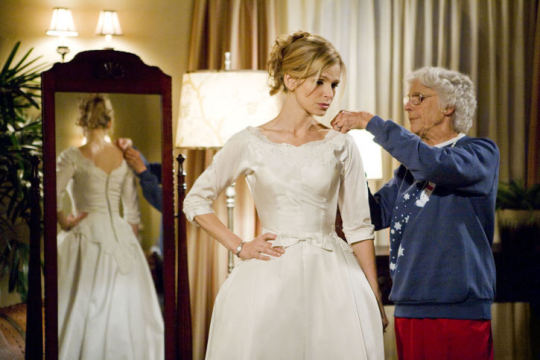
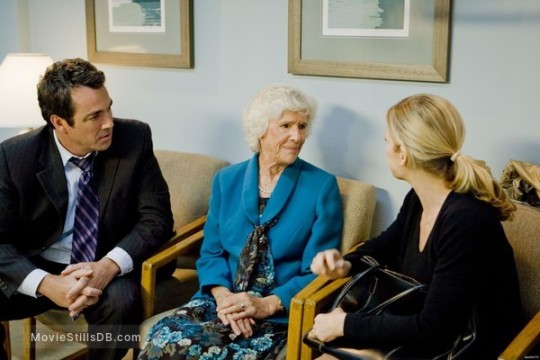

Aw, Willie Ray....
26 notes
·
View notes
Photo

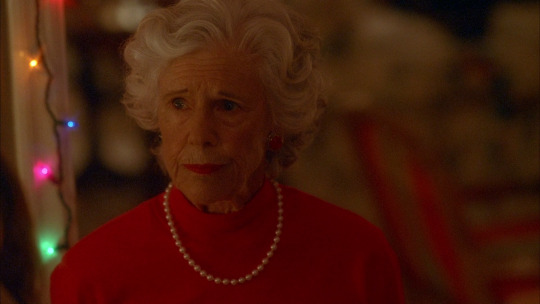
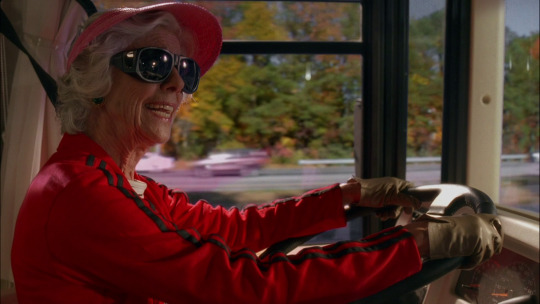
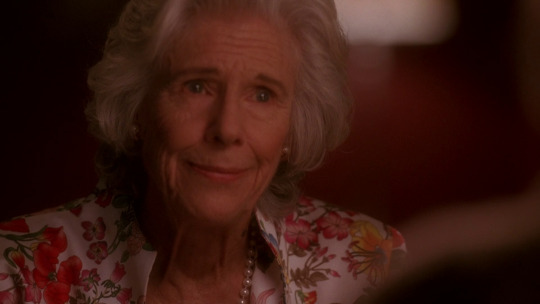
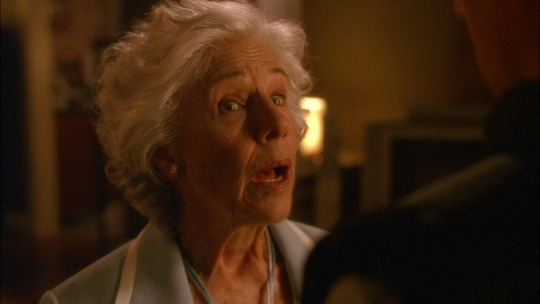


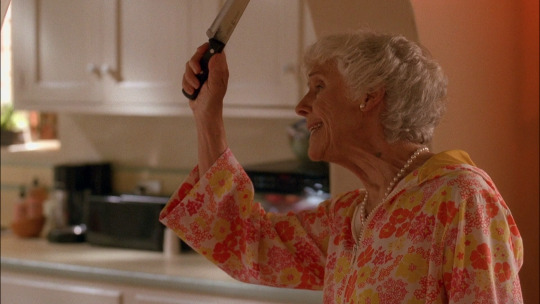
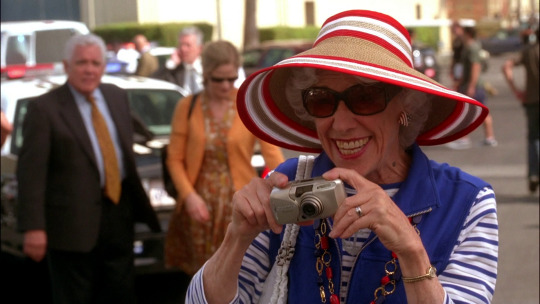
frances sternhagen on the closer (2005-2012)
8 notes
·
View notes
Text
RIP Frances Sternhagen
She was Cliff's mother on the 1980's sitcom Cheers, and Charlotte's MIL on Sex and The City.
1 note
·
View note
Text
I found her so funny when she would pop up in things. RIP.
14 notes
·
View notes
Text


A special shoutout to two departed costars of The Mist (2007) - Andre Braugher and Frances Sternhagen (one of my all time favorite character actresses.) RIP.
5 notes
·
View notes
Text

Frances Sternhagen RIP
5 notes
·
View notes
Text
Top 10 Horror Movies, like, EVER (reissued)
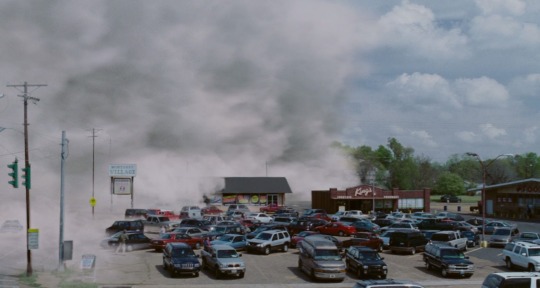
10. THE MIST
In 2007, writer/director Frank Darabont once again proved he does his best work when adapting master of literary horror Stephen King (after The Green Mile and solid gold masterpiece The Shawshank Redemption), this time turning to pure horror with one of the author’s lesser-known early novellas. The result is another tour-de-force cinematic blueprint, a taut, harrowing tale of humanity pushed far beyond the brink by unexplained supernatural events and the monstrous lengths normal people will go to to stay alive, as a small-town New England supermarket is cut off from the outside world by a mysterious, monster-filled mist. The Expanse’s Thomas Jane proves a complex hero, beefy yet vulnerable as local artist David Drayton, leading a high-calibre cast of Stephen King-movie/TV regulars – Jeffrey DeMunn (The Green Mile), Andre Braugher (Salem’s Lot), William Sadler (The Shawshank Redemption) and Frances Sternhagen (Misery) – and “newcomers” – Laurie Holden (who must have really impressed Darabont, since he subsequently cast her alongside DeMunn in The Walking Dead), Tinker Tailor Soldier Spy’s Toby Jones (as one of the most unorthodox action heroes in cinematic history) and Miller’s Crossing’s Marcia Gay Harden, pretty much stealing the film as deeply unhinged Bible-basher Mrs Carmody, who goes from unsavoury town nut to fervent cult leader as the situation grows increasingly desperate. Darabont once again proves what an exceptional screen storyteller he can be, effortlessly weaving an atmosphere of mounting dread and knife-edge tension, as well as delivering some nightmarish set-pieces featuring magnificent Lovecraft-inspired beasties designed by The Walking Dead’s creature effects master Greg Nicotero. When cinematic horror was becoming increasingly saturated with “gorno” Saw-derivatives, this was a welcome return to old-fashioned monster movie thrills (Darabont himself was heavily inspired by the monochrome scary movies of his childhood, and longed to make the film in black-and-white – indeed, this is definitely worth watching at least once in the “director’s cut” B&W version he included on the special edition DVD release), and not only proved one of the best examples of King on screen to date, but also one of THE key horror movies of the “Noughties”. Not least thanks to that ending, one of the greatest sucker punch twists of all time – reputedly King was most envious of Darabont on seeing it for the first time, wishing he’d thought it up himself. Coming from the King of Horror, that’s high praise indeed.
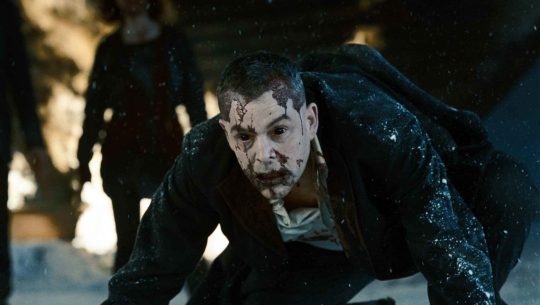
9. 30 DAYS OF NIGHT
When Steve Niles, the undisputable master of post-modern horror comics, originally came up with the concept for his definitive work, it was intended for the big screen, but he ultimately wound up committing it to print because he just couldn’t get anyone to produce it. Interesting, then, that the comic’s runaway success led to its optioning by Sam Raimi and his production company Ghost House Pictures, Niles adapting the first volume alongside Stuart Beattie and Brian Nelson, with Hard Candy director David Slade at the helm. Of course, the concept was always a killer – for one month every year, the sun never rises over the Alaskan town of Barrow, a fact that a coven of hungry vampires have decided to exploit in a midwinter free-for-all feeding frenzy. Josh Hartnett manfully crumbles in what remains his best role as town sheriff Eben Olemaun, ably supported by Melissa George as his estranged fire-marshal wife Stella, Memento/Batman Begins’ Mark Boone Junior as hard-as-nails town loner Bo, Ben Foster (one of my very favourite actors) as a mysterious drifter with a dark agenda, and Danny Huston, who created one of the best ever screen vampires with nihilistic pack leader Marlow. It’s ironic that David Slade should have followed this with Twilight film Eclipse (although he was an inspired choice – after all, it’s the one that DOESN’T suck) – this is about as far removed from the toothless, blood-lite young adult series as you can get, an unrelenting, gore-drenched exercise in relentless carnage and ice-cold terror. These vamps wouldn’t be caught (ahem) dead sparkling – they’re man-shaped mako sharks, all dead black eyes and jagged teeth, gleefully revelling in slaughter and playing sadistic games of cat and mouse with the isolated townsfolk. This is definitely not a movie for the faint of heart, and it takes itself deadly seriously right through the unapologetically bleak ending, but it is nonetheless an endlessly rewarding thrill ride for the faithful, paying respect to all the great conventions of the genre while simultaneously ripping them to shreds. Brutal, bloody and brilliant, this is BAR NONE the best vampire movie of the post-Interview age, and very nearly my all-time favourite EVER ...

8. POLTERGEIST
1982 saw the release of TWO of my all-time fave horror movies, and the lesser (but no less awesome) of the two is what I personally consider to be THE DEFINITIVE haunted house movie. Tobe Hooper, director of the original Texas Chainsaw Massacre, pretty much reinvented ghosts on the big screen with this thrilling tale of a small-town-American family, the Freelings, whose seemingly perfect home comes under the influence of a powerful supernatural force. At first the effects are harmless – moving furniture and the like – until a night-time thunderstorm signals a terrifying escalation and younger daughter Carol-Anne (Heather O’Rourke) is sucked through a portal into the spirit world. Long before he was the dad in The Incredibles, Craig T. Nelson had already become a pretty definitive cuddly American screen father as Steven Freeling, while JoBeth Williams is a lioness defending her cubs as mother Diane; then-newcomer Heather O’Rourke, meanwhile, is a naturalistic revelation as Carol-Anne, her innocent delivery of “They’re here!” becoming a genuine geek phenomenon all on its own, but the film’s real runaway performance comes from Zelda Rubinstein as diminutive Southern belle psychic medium Tangina Barrons, whose every screen moment is a quirky joy. As you’d expect, Hooper’s scares are flawlessly executed, the atmospheric tension ratcheted with consummate skill, even if the director’s characteristic gore is kept to a PG-13-friendly minimum ... then again, this was a summer offering from Back to the Future producers Frank Marshall and Steven Spielberg himself, who was also the main screenwriter. Indeed, his influence is keenly felt throughout – the suburban world the Freelings inhabit is very much in keeping with Spielberg classics like Close Encounters of the Third Kind and E.T. – and there have been consistent rumours that he was all but the de-facto director on set. The film (along with its sequels) has also gained a reputation for being cursed, with no less than FOUR cast members dying not long after (most notably Dominique Dunne, who played elder Freeling daughter Dana, who was murdered by her boyfriend just five months after the film’s release). Whatever the truth behind these rumours, there’s no denying this is a cracking film – taut, atmospheric and consistently terrifying while also displaying a playful, quirky sense of humour and lots of heart, it remains one of the most rewarding and entertaining screen ghost stories around.

7. BUBBA HO-TEP
Bruce Campbell is Elvis Presley! He really is! Although maybe he isn’t ... all right, TECHNICALLY he’s Sebastian Haff, a washed-up, long-retired Elvis impersonator languishing in a retirement home who claims he really IS the King (apparently he swapped places with the REAL Haff because he’d grown tired of fame). Meanwhile one of his fellow residents is an old black man who claims he’s the real JFK, maintaining that President Lyndon Johnson had him dyed black and secreted in anonymity with a bag of sand sewn into the gap in his brain ... confused yet? Well hold on, cuz there’s more – the retirement home in question has been invaded by the malevolent spirit of a cursed soul-sucking mummy, and only these two fallen heroes can save the day ... yup, writer/director Don (Phantasm and John Dies At the End) Coscarelli’s initially criminally overlooked but deservedly seriously cult adaptation of Joe R. Lansdale’s novel is as typically oddball as the rest of his filmography. It’s also his most moving and spiritual work to date – behind all the supernatural weirdness and quirky, offbeat humour this is a deeply-affecting meditation on the pains of growing old and losing your place in the world. Bruce Campbell’s Elvis/Haff is a tragic hero, regretting his current lot and pining for former glories, but he still has the odd little twinkle of his former charm and bravado (particularly during his interactions with his nurse, played with spiky gutsiness by Ella Joyce), while screen legend Ossie Davis is stately and charismatic as “the former President Kennedy”, even when he sounds REALLY crazy. Meanwhile the creature, “Bubba Ho-Tep” himself (Bob Ivy), is a fantastically weird creation, Coscarelli’s skilful use of atmospherics elevating him far above the “guy-in-a-suit” effects – he’s mean, cranky, and just as strong a character as his flesh-and-blood counterparts. Coscarelli really let rip on this one – it’s chock-full of his characteristic leftfield comic-scariness (Elvis/Haff’s early encounter with one of the mummy’s scarab familiars is a particular zany gem), visually inventive and frequently laugh-out-loud hilarious, but in the end plays out on such a heartfelt, genuinely powerful and moving denouement that you can’t help getting a lump in your throat, even while it is one of those movies that leaves you with a big dumb goofy grin on your face. It’d be pretty sweet if Coscarelli and his mate Paul Giamatti ever get their long-gestating “prequel” Bubba Nosferatu: Curse of the She-Vampires off the ground, but this is one that you can’t help loving all on its own. See this if you’re a Coscarelli fan – it’s his best work to date – see this if you love quirky, unusual and original horror ... hell, see this if you love MOVIES. This is a true GEM, not to be missed.

6. DOG SOLDIERS
My favourite werewolf movie is also easily one of the most offbeat – think The Howling meets Assault On Precinct 13 and you’re pretty close to the mark. Before visionary British horror director Neil Marshall had his big break with masterpiece The Descent, he made an impressive cult splash with his feature debut, a fiendish comedy horror in which a six-man British Army unit on training manoeuvres in the wilds of Scotland stumbles upon a pack of hungry werewolves and are forced to take shelter in an isolated cottage. With their ammo dwindling and their weapons largely ineffective against the monsters (not a silver bullet between them, of course), it doesn’t look likely that ANY of will survive the night ... setting the humour dial for JET BLACK, Marshall keeps the atmosphere tense and the substantial gore flying (I was amazed when I saw this in the cinema that it was only a 15 – even just ten years earlier stuff like this was GUARANTEED a solid 18 certificate), while the squaddies are a likeably foul-mouthed bunch with a winning, sometimes enjoyably geeky line in spiky banter (Marshall makes frequent references to everything from Star Trek and The Evil Dead to The Matrix and, in one of my favourite nods, Zulu). Trainspotting’s Kevin McKidd is brawny but enjoyably self-deprecating as nominal hero Cooper, Sean (son of Doctor Who Jon) Pertwee gives great earthy-shoutiness as Sgt. Wells, Darren Morfitt consistently steals the film as mouthy little bugger “Spoon” (short for Witherspoon), and Game Of Thrones star Liam Cunningham injects a strong dose of dark and dangerous as Captain Ryan, the special forces operative with a sinister plan, while Emma Cleasby is far from just a token female as zoologist Megan, who came to Scotland in search of the legend and seems to have found a whole lot more than she bargained for – she’s smart, tough and flat-out refuses to be a love interest, and definitely proved a good trial run for Marshall’s all-female cast in The Descent. It’s impressively paced – after an initial character-driven set-up so we can get to know the lads (including a fun little scare-on-top-of-a-laugh moment), the action kicks in fast and rarely lets up for the rest of the film’s tightly-packed 105 minute running time. The set pieces are thrilling and frequently fun (particularly Spoon’s ballsy little distraction technique), and the werewolves are impressively brought to life through physical animatronics created by Image FX (the Hellraiser effects team!) and a talented troupe of stilt-walking stunt performers – no cheesy CGI here! Altogether it marked a blinding debut for a singular, visionary sci-fi/horror talent who’s still making his presence felt – Doomsday was a delightfully old-school slice of super violent sci-fi in the John Carpenter vein, while tight, gruesome little Roman-era suspense thriller Centurion proved that a historical epic doesn’t have to be 2+ hours long with a big budget to impress, and Marshall continues to garner real acclaim through his extensive TV work on the likes of Game of Thrones. That said, I can’t wait for him to return to the big screen, preferably with more dark, edgy, blood-soaked fun like this ...

5. TREMORS
I’ve always had something of a bias towards horror movies that are also comedies, or at least that have a strong sense of humour throughout, and when it comes to funny horror movies, this brilliant throwback to cheesy 1950s monster movies is KING, baby! While it snuck in under the radar on its 1990 release, director Ron Underwood’s sleeper universally wowed critics, word of mouth helping it to become an impressive cult smash once it hit home video ... which meant I saw it at JUST the right time, the film quickly becoming a firm fixture in my favourites lists and a major milestone in my own geek development. The premise is simplicity itself – giant underground worms with tentacles in their mouths terrorise an isolated desert community – but underneath the goofy concept is a surprisingly sophisticated movie that continues to influence filmmakers today. Kevin Bacon was in a bit of a career slump at the time (Footloose had been SO LONG before), but this gave him both the shot in the arm he needed and one of his most memorable roles ever – odd-jobbing slacker Val McKee, who has to get off his arse and think big to beat the beasties; Fred Ward is the perfect foil as Val’s crotchety “business” partner Earl Basset, while Finn Carter is thoroughly lovable as scientist Rhonda LeBeck, a no-nonsense smart girl who can go toe-to-toe with the boys (and manages to lose her pants WITHOUT losing her credibility), but the film is consistently stolen by Family Ties star Michael Gross as tightly wound survivalist Burt Gummer – this might be Bacon’s movie, but Gross is the real star, deservedly becoming the driving force of the film’s various sequels AND the spinoff TV series. The film opens with a killer of a funny line, starting as it means to go on – frequently hilarious and smart as a whip, consistently defying character and genre tropes and wrong-footing the viewer almost a decade before Joss Whedon started doing the same with Buffy the Vampire Slayer, all the while balancing the belly laughs with some genuinely scary set pieces. The worms themselves (or “Graboids”, if you want to get specific) are spectacular creations, some of the most original movie monsters out there, and they still stand up well today, just like the rest of the film. A cornerstone of the genre that wins over new fans with each generation, this is one of those films that deserves to be remembered for a very long time, and looks set to do just that.

4. EVIL DEAD 2: DEAD BY DAWN
Nobody does screen chaos like Sam Raimi, particularly when it comes to his horror offerings – still his first and purest love. His original debut feature The Evil Dead is rightly considered the DEFINITIVE indie horror, and to this day remains the standard blueprint for all young, aspiring directors starting out in the genre ... it’s also a work of pure, unadulterated MADNESS once it gets going. Raimi upped the ante with this part-remake, part-sequel, the increased budget and proper studio resources meaning he could REALLY let his imagination run riot, and the results are a cavalcade of tongue-clean-THROUGH-cheek, jet black comedic insanity that STILL has yet to be equalled. Bruce Campbell returns as unlikely “hero” Ash Williams, thoroughly out of his depth and failing miserably to hold it together as the ancient tome of evil itself, the Necronomicon Ex-Mortis (“Book of the Dead”), unleashes a horde of undead demons on the isolated forest cabin he’s brought his girlfriend to. Wildly expanding on the supernatural back-story of his original, Raimi and co-writer Scott Spiegel also ramped up the humour, playing the horror on the blackest edge they can, albeit cut with a hefty dose of Tex Avery – Ash’s battle with his own possessed, eventually severed hand is like some demented skit out of The Three Stooges, while the absolute comedic highlight is the ridiculously over-the-top “laughing room” sequence, in which the seemingly inanimate objects in the cabin suddenly come to life and begin to taunt Ash; add in the great wealth of re-view-friendly visual in-jokes scattered throughout and this remains Raimi’s FUNNIEST film to date. Campbell clearly had a ball, throwing himself into the action with everything he had, and he’s ably supported by a meaty (ahem) cast that includes a very pre-Slither Dan Hicks as a seriously scuzzy redneck and Raimi’s own brother Ted, virtually unrecognisable as one of the maniacal Deadites (“I’ll swallow your soul!”). The creature effects from the great Greg Nicotero still stand up spectacularly well today (they remain some of his very best work), from hideous gurning beasts to insane fountains of blood, while Raimi’s direction is pitch-perfect, playing the humour beautifully while still (sometimes simultaneously) building up a near-unbearable atmosphere of unholy dread, and the climax is ingenious, beautifully setting things up for the enjoyably madcap trilogy-closer Army of Darkness: the Medievil Dead. Raimi has finally brought the trilogy the follow-up fans had been waiting decades for with the fantastically bonkers Ash Vs. the Evil Dead series, but this delirious masterpiece remains the franchise’s zenith. Groovy ...

3. JAWS
It may be the oldest film on this list (released in 1975, it’s THREE YEARS OLDER than I am!), but Steven Spielberg’s breakthrough feature has aged incredibly well. Indeed, it almost single-handedly changed the face of big budget cinema, establishing the idea of tent-pole summer blockbusters and blanket-bombardment advertising campaigns (in particularly it was one of the first to make heavy use of television to drum up excitement and interest), ultimately taking over $400,000,000 on its original release (the equivalent of multi-billion big earners like Avatar today) and paving the way for Star Wars two years later. Not to mention the film’s famous negative effect on beach-going for years after ... but under all that there’s a magnificent, masterfully-crafted film, still (rightly) considered one of the director’s best. The plot may be ridiculously simple – New England beach-community Amity Island is terrorised by a man-eating Great White shark – but there’s a stealthily subversive story here, taking old genre conventions and twisting them in new, unexpected directions (which would, ironically, form a template for a great many later horror movies); while the first hour is a slow-burn thriller, the second is more like a light-hearted nautical action adventure with added scares. The French Connection’s Roy Scheider virtually CREATED the everyman-out-of-his-depth hero with his portrayal of Amity police chief Martin Brody, a former New York cop who’s terrified of the water, Richard Dreyfuss is lovable comedic gold as rich kid marine biologist Matt Hooper, Lorraine Gary did a lot with very little as Brody’s wife Ellen, and Robert Shaw effortlessly steals the film as shark hunter Quint, a ferocious, scenery-chewing force of nature in the mould of Moby Dick’s Captain Ahab. The film is immensely rich in great character moments, from Hooper’s rib-tickling arrival on the island and the dialogue-free moment Brody shares with his younger son Sean, to the undeniable high point of the film, where a humorous comparison of scars (which has itself become a popular homage-magnet in film and TV) leads to Quint chilling account of his wartime experience onboard the U.S.S. Indianapolis (the ship transporting the Hiroshima atomic bomb which was torpedoed in the Pacific, leading to over a thousand stranded sailors being eaten alive by sharks); indeed, this is one of Spielberg’s most well-written films, sitcom writer Carl (The Odd Couple) Gottlieb’s polish of author Peter Benchley’s adaptation of his own original novel still zipping and zinging today, although some of the best dialogue was derived from the actors’ own on-set improvisations (most famously Scheider’s now-legendary “We’re gonna need a bigger boat.”). It’s also one of his most well-directed, with near-hypnotic tricks in editing and bold, adventurous choices in atmosphere-building, often a result of the shoot’s infamous difficulties – the animatronic shark (affectionately named “Bruce” by the director, and “the Great White Turd” by the crew) created by Bob Mattley (the guy who did the giant squid in 20,000 Leagues Under the Sea) was impressive when it worked, but this was so rarely that the director had to devise several means of creating maximum tension WITHOUT showing the shark, which ultimately ADDS to the effectiveness of those scenes, particularly the “barrel-chasing” in the second half. None of these tricks, however, work better than the score from Spielberg’s most faithful collaborator, John Williams, based around a deceptively simple four-note melody that evolves into something spectacularly evocative, which has rightly become the film’s most iconic element. Humorous, intriguing, intense and still thoroughly terrifying when it wants to be, this is, bar-none, the finest man-versus-nature horror EVER MADE, and surely always will be.
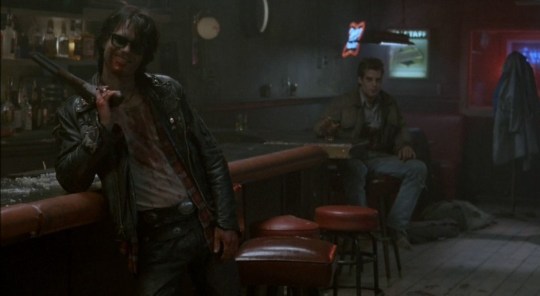
2. NEAR DARK
I’m a fool for vampires (much like I’m a fool for redheads, but that’s a whole other conversation), so bloodsucker horror is one of my very favourite sub-genres. I’m also a big fan of Kathryn Bigelow – two of her most recent features, The Hurt Locker and Zero Dark Thirty, both pinged VERY LOUDLY on my radar (the former is my favourite war movie of the current decade), while her collaboration with then husband James Cameron, Strange Days (he wrote, she directed), rates high on my list of criminally underrated screen gems. So what do you think happened when she made a vampire movie? The results SHOULD have become one of the most celebrated and legendary features in the genre ... except that it came out in October 1987, two months after the admittedly cool and fun but far more glossy and dumb The Lost Boys. Needless to say in the wake of that, Bigelow’s film got kind of lost in the back chatter, nearly flopping at the box office and all but vanishing into obscurity ... until its subsequent release on video (quite rightly) earned it an impressive cult following. Myself included, because this movie is RIGHT UP my dark and dangerous alley. Collaborating with The Hitcher’s screenwriter Eric Red, Bigelow crafted a (largely) deadly serious modern day supernatural “western”, in which cocky farm-boy Caleb Colton (Heroes’ Adrian Pasdar) hits on cute drifter Mae (Jenny Wright, probably best known for her supporting turn in Young Guns 2), only to get WAY more than he bargained for when her kiss leaves him with a crippling hunger and one serious tanning problem. Pasdar’s all-knowing youthful swagger disintegrates as he tumbles further down the vampiric rabbit hole, while Wright’s fragile beauty compliments her character’s deep, soulful melancholy – the pair make for a compelling, tragic romantic centre anchoring the horrors that unfold as Caleb begins to lose himself to his burgeoning nature; even so, the true dark and twisted soul of the film lies with Mae’s predatory nomad “family” – Lance Henriksen is the definitive “dark father” as nihilistic pack leader Jesse Hooker, while his Aliens co-star Jenette Goldstein is his perfect mate as punk rock femme fatale Diamondback, and Joshua John Miller excels as Homer, the bitter old man trapped in a child’s body ... meanwhile Bill Paxton consistently steals the film as mad dog Severen, chewing the scenery to splinters with gleeful, feral aplomb and stealing all the best lines. It’s a potent, heady ride, taking itself pretty seriously throughout but deriving a subtle, inky black sense of gallows humour from the situation, and the set-pieces are intense and thrilling (particularly the shootout in a roadside motel at dawn, where shafts of sunlight become as lethal as bullets). At times it’s also powerful, soulful and bleakly beautiful, Bigelow’s heavily stylised visuals brilliantly augmented by the spiky electronic score from Tangerine Dream. It also subverts the classic vampire conventions with great skill and originality, with nary a cross, coffin or even fang in sight. Like 30 Days of Night, this is the perfect antidote for anyone suffering from Twilight-overload – the monster can be quite interesting when he’s the hero, but he’s just so much more fun when he’s the bad guy ...
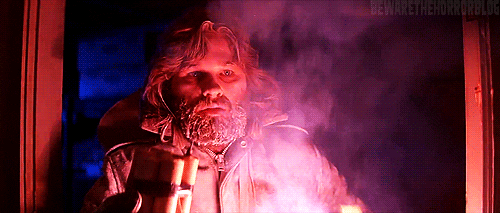
1. JOHN CARPENTER’S THE THING
While I’m sure many will think I’m mad for preferring this over Carpenter’s other seminal horror classic Halloween, this one’s much more my speed, a perfect exercise in sustained tension, paranoia and white-knuckle terror. Critically mauled and under-performing on its release (it was labelled by many as a sort of “anti-E.T.: the Extraterrestrial”, which came out two weeks earlier ... and interestingly this opened the same day as Blade Runner!), it nonetheless became a massive cult hit now rightly considered one of the true DEFINITIVE horror movies. Faithfully adapting John Campbell, Jr.’s novella Who Goes There? (certainly more so than Howard Hawks’ admittedly entertaining but ultimately very kitsch The Thing From Another World), it revolves around the all-male crew of U.S. research station 4, Outpost 31, in Antarctica, who come under threat from a body-snatching alien entity that can perfectly imitate its victims after investigating the mysterious destruction of a neighbouring Norwegian facility. Carpenter regular Kurt Russell (Escape From New York, Big Trouble In Little China) is at his gruff best as helicopter pilot R.J. MacReady, the taciturn blue-collar Joe called upon to play “hero”, Keith David (Pitch Black, Carpenter’s They Live) angrily flexes his acting and physical muscles as hot-tempered researcher Childs, Donald Moffat crumbles as ineffectual station commander Garry, and screen legend Wilford Brimley effortlessly makes the exposition compelling as tightly-wound biologist Blair. The freezing Antarctic atmosphere perfectly complements the razor-edged suspense, the idea that ANYONE could be the creature lending every scene a palpable sense of implied threat, while the science of the fiction is thankfully largely put on the back-burner in favour of the story and scares; meanwhile there’s a cheeky edge of jet black humour throughout, from the scuttling disembodied head to Garry’s explosive reaction to MacReady’s improvised humanity-test. Rob (The Howling, Robocop, Fight Club) Bottin’s fantastically nightmarish creature effects are a magnificent achievement, still looking as good today as they did back in 1982, while master composer Ennio Morricone’s subtle, atmospheric score is a triumph of creepy, insidious subliminal effect. For me, this film is the definition of fear – the idea that the threat could be literally ANYONE, that you could even become that yourself, be taken over completely, body and soul, is absolutely terrifying, and Carpenter executes this potential reality with surgical precision from the intriguing, icy start to the bleak, desolate ending. Perfect.

#the mist#30 days of night#poltergeist#bubba ho-tep#dog soldiers#tremors#evil dead 2#Jaws#near dark#John Carpenter's The Thing#my favourite horror movies#quality horror#Top Tens#decided I wanted to redo this properly cause finally got the hang of this mess
102 notes
·
View notes
Text
THE MIST
(from November 2007)
Frank Darabont's been around a lot longer than most people think or give him credit for. After his '83 short "The Woman In The Room," from the Stephen King short story, he worked with Chuck Russell on a couple scripts (Nightmare on Elm Street 3 and the kickass Blob remake in '88) and wrote the original script for Kenneth Branagh's overblown Frankenstein - remember, with Robert DeNiro as the monster? But then Darabont came out of the gate swinging with his feature directorial debut, The Shawshank Redemption. To say that the movie is well-thought of and admired is to abuse understatement. His follow-up, The Green Mile, wasn't as universally beloved but was a solid hit and gave him a perfect .1000 batting average when it came to adapting Stephen King period prison tales. After 2001's disappointing The Majestic, Darabont has returned to script and direct yet another King story, but this one. . .well, an uplifting, feel-good triumph of the human spirit this ain't. No, he's decided to tackle a straight up horror flick this time out; The Mist is an unapologetic monster romp and Darabont proves yet again that he's got the goods to bring the master's works to the big screen with consistent skill and style.
There's a big storm coming to Castle Rock, Maine. Artist David Drayton (Thomas Jane) finds this out first hand, when the nor'easter tears into his lakeside home late one night and causes all sorts of damage. The next morning, David takes his young son Billy (Nathan Gamble) and their seasonal neighbor, big city lawyer Brent Norton (Andre Braugher) into town to get food as well as supplies to clean up. Once they reach the crowded supermarket (apparently there's many similarly affected folks in town with the same idea as David), it isn't long before a hysterical, bloody man runs into the store, screaming "There's something in the mist!"
The customers look outside and see that there is, in fact, a large, creeping wave of mist overtaking the street. . .the parking lot. . .and finally enveloping the store. Then some kind of massive earthquake strikes, ripping loose overhead lights and overturning shelves. The inhabitants of the store wonder what, exactly, is happening. An attack of some kind - biological, perhaps? A natural disaster? No one knows, and most are too frightened to venture outside to find out. Those that do, don't return. Assistant manager Ollie (Toby Jones) only wants to help and keep folks calm. The pretty new teacher Amanda (Laurie Holden) tries to help David keep Billy from being scared to death. And local spinster Mrs. Carmody (Marcia Gay Harden) - well, she decides in no time at all that this situation is a punishment from God; it's the end of days, and right now.
Of course, there IS something in the mist, something ravenous and bloodthirsty that starts picking people off in escalating, horrible fashion. But as hours turn into days, and every seemingly good idea ends up on the far side of worse, what's inside the store becomes as dangerous as what's awaiting outside. Because when you put the human animal in a corner and give him nothing but the most terrible of options, things have a way of falling apart with sickening ease. Neighbor can turn on neighbor, and your best friend becomes something entirely different when his sanity is stretched just a little too tightly.
I'm just going to state right now that as a horror movie, as something that threatens you and makes you feel truly uncomfortable as you sit safely in the dark, The Mist is without a doubt a great movie. As a FILM? Superb as well, no question. Again, you will not leave feeling secure in the abilities of human behavior under pressure; you will step out into the light and be thankful that you don't have to confront such terror in your life. Darabont's approach is claustrophobic and right in your face, milking every tense situation for all it's worth - be it confronting a monster from your worst nightmare or the utter disgust at realizing exactly what people are capable of in the most undesirable of circumstances. The crew Darabont worked with on his episode of The Shield last year (cinematographer Ronn Schmidt especially) create an immediate, you-are-there docudrama feel to the film that helps to immerse you even deeper into it. The makeup FX by KNB - still the greatest effects house in the entire business - is phenomenal, helped along immeasurably by the input of famed artist Bernie Wrightson with the creature design. Sure, some of the CGI is obviously that - CG - but you cannot deny the effectiveness with which it is used.
Acting across the board is top-notch. Thomas Jane proves once again that whatever IT is, the man's got it and then some. Laurie Holden exudes strength and despair in equal measure - I dug the chick in Silent Hill, sure, but I had no idea she had these kind of chops. Braugher is righteous and indignant precisely as the character he plays would be. Young Nathan Gamble plays the terrified child without once becoming annoying or overbearing as sometimes happens in flicks like this, no; he breaks your heart with his fear and concern for his father, and above all makes you want everything to turn out alright - for his sake at least. The character actor Hall Of Fame is well represented with William Sadler, Jeffrey DeMunn and Frances Sternhagen, all of whom do exactly what it is they do - create believable, realistic characters that you're sure you've met at one time or another in your life. And finally, Marcia Gay Harden. Given the hardest part to play, she's the one who makes it all work; because if you don't buy it - and it would be VERY easy to overact in this part, I'm sure - everything falls apart. The threat inside the store just doesn't play. But she makes it seem all too possible, sadly, and to chilling effect. She is simply outstanding.
With his script, Darabont proves exactly why his King adaptations are so successful in that he knows when to step back and let the story and the source material do the work. Of course he realizes when it's the time to throw his influence on things, but - as he's done previously - he allows King's characters to simply BE, to merely exist as King intended. It's been said before (and forgive me for repeating it) that the reason Stephen King's stories work so well is because you care about the people. You put a living, breathing, ordinary human being into the extraordinary situations that King does and suddenly it's all right there for you, the fear. You WANT them to get away from the threat. You WANT them to be okay. And when they don't - when they fail or are betrayed or just plain lose - it hits you hard. Darabont understands that as no other director before him ever did; not three times out, anyway. Just like in Shawshank and Green Mile, Darabont brings the characters whole into cinematic being, using chunks of dialogue - verbatim - from the original story.
Which leads us to Darabont's greatest and only major deviation from the source material: the ending. This will make you squirm, this new ending, and it should also (I would imagine) get you talking. It's not mere hyperbole to say that it's nothing short of shocking. To be truthful, I saw more than a few people leave their seats with less than 3 minutes to go after the TRUE denouement came. It's divisive; it's going to piss some people off who aren't going to be able to handle it and as a result they're going to hate the movie. But those of us who realize that this is the inevitable outcome in terms of what Darabont's trying to say with it will understand. Maybe we won't like it either - but we'll understand. The bottom line? It's simple. The mere fact that he had the rock solid balls to end his movie this way is what makes it as good as it is. It's what makes it a true blue horror movie. It's what makes The Mist a classic.
0 notes
Text
My Top Ten Favourite Horror Movies
10. THE MIST – in 2007, writer/director Frank Darabont once again proved he does his best work when adapting master of literary horror Stephen King (after The Green Mile and solid gold masterpiece The Shawshank Redemption), this time turning to pure horror with one of the author’s lesser-known early novellas. The result is another tour-de-force cinematic blueprint, a taut, harrowing tale of humanity pushed far beyond the brink by unexplained supernatural events and the monstrous lengths normal people will go to to stay alive, as a small-town New England supermarket is cut off from the outside world by a mysterious, monster-filled mist. The Expanse’s Thomas Jane proves a complex hero, beefy yet vulnerable as local artist David Drayton, leading a high-calibre cast of Stephen King-movie/TV regulars – Jeffrey DeMunn (The Green Mile), Andre Braugher (Salem’s Lot), William Sadler (The Shawshank Redemption) and Frances Sternhagen (Misery) – and “newcomers” – Laurie Holden (who must have really impressed Darabont, since he subsequently cast her alongside DeMunn in The Walking Dead), Tinker Tailor Soldier Spy’s Toby Jones (as one of the most unorthodox action heroes in cinematic history) and Miller’s Crossing’s Marcia Gay Harden, pretty much stealing the film as deeply unhinged Bible-basher Mrs Carmody, who goes from unsavoury town nut to fervent cult leader as the situation grows increasingly desperate. Darabont once again proves what an exceptional screen storyteller he can be, effortlessly weaving an atmosphere of mounting dread and knife-edge tension, as well as delivering some nightmarish set-pieces featuring magnificent Lovecraft-inspired beasties designed by The Walking Dead’s creature effects master Greg Nicotero. When cinematic horror was becoming increasingly saturated with “gorno” Saw-derivatives, this was a welcome return to old-fashioned monster movie thrills (Darabont himself was heavily inspired by the monochrome scary movies of his childhood, and longed to make the film in black-and-white – indeed, this is definitely worth watching at least once in the “director’s cut” B&W version he included on the special edition DVD release), and not only proved one of the best examples of King on screen to date, but also one of THE key horror movies of the “Noughties”. Not least thanks to that ending, one of the greatest sucker punch twists of all time – reputedly King was most envious of Darabont on seeing it for the first time, wishing he’d thought it up himself. Coming from the King of Horror, that’s high praise indeed.
9. 30 DAYS OF NIGHT – when Steve Niles, the undisputable master of post-modern horror comics, originally came up with the concept for his definitive work, it was intended for the big screen, but he ultimately wound up committing it to print because he just couldn’t get anyone to produce it. Interesting, then, that the comic’s runaway success led to its optioning by Sam Raimi and his production company Ghost House Pictures, Niles adapting the first volume alongside Stuart Beattie and Brian Nelson, with Hard Candy director David Slade at the helm. Of course, the concept was always a killer – for one month every year, the sun never rises over the Alaskan town of Barrow, a fact that a coven of hungry vampires have decided to exploit in a midwinter free-for-all feeding frenzy. Josh Hartnett manfully crumbles in what remains his best role as town sheriff Eben Olemaun, ably supported by Melissa George as his estranged fire-marshal wife Stella, Memento/Batman Begins’ Mark Boone Junior as hard-as-nails town loner Bo, Ben Foster (one of my very favourite actors) as a mysterious drifter with a dark agenda, and Danny Huston, who created one of the best ever screen vampires with nihilistic pack leader Marlow. It’s ironic that David Slade should have followed this with Twilight film Eclipse (although he was an inspired choice – after all, it’s the one that DOESN’T suck) – this is about as far removed from the toothless, blood-lite young adult series as you can get, an unrelenting, gore-drenched exercise in relentless carnage and ice-cold terror. These vamps wouldn’t be caught (ahem) dead sparkling – they’re man-shaped mako sharks, all dead black eyes and jagged teeth, gleefully revelling in slaughter and playing sadistic games of cat and mouse with the isolated townsfolk. This is definitely not a movie for the faint of heart, and it takes itself deadly seriously right through the unapologetically bleak ending, but it is nonetheless an endlessly rewarding thrill ride for the faithful, paying respect to all the great conventions of the genre while simultaneously ripping them to shreds. Brutal, bloody and brilliant, this is BAR NONE the best vampire movie of the post-Interview age, and very nearly my all-time favourite EVER ...
8. POLTERGEIST – 1982 saw the release of TWO of my all-time fave horror movies, and the lesser (but no less awesome) of the two is what I personally consider to be THE DEFINITIVE haunted house movie. Tobe Hooper, director of the original Texas Chainsaw Massacre, pretty much reinvented ghosts on the big screen with this thrilling tale of a small-town-American family, the Freelings, whose seemingly perfect home comes under the influence of a powerful supernatural force. At first the effects are harmless – moving furniture and the like – until a night-time thunderstorm signals a terrifying escalation and younger daughter Carol-Anne (Heather O’Rourke) is sucked through a portal into the spirit world. Long before he was the dad in The Incredibles, Craig T. Nelson had already become a pretty definitive cuddly American screen father as Steven Freeling, while JoBeth Williams is a lioness defending her cubs as mother Diane; then-newcomer Heather O’Rourke, meanwhile, is a naturalistic revelation as Carol-Anne, her innocent delivery of “They’re here!” becoming a genuine geek phenomenon all on its own, but the film’s real runaway performance comes from Zelda Rubinstein as diminutive Southern belle psychic medium Tangina Barrons, whose every screen moment is a quirky joy. As you’d expect, Hooper’s scares are flawlessly executed, the atmospheric tension ratcheted with consummate skill, even if the director’s characteristic gore is kept to a PG-13-friendly minimum ... then again, this was a summer offering from Back to the Future producers Frank Marshall and Steven Spielberg himself, who was also the main screenwriter. Indeed, his influence is keenly felt throughout – the suburban world the Freelings inhabit is very much in keeping with Spielberg classics like Close Encounters of the Third Kind and E.T. – and there have been consistent rumours that he was all but the de-facto director on set. The film (along with its sequels) has also gained a reputation for being cursed, with no less than FOUR cast members dying not long after (most notably Dominique Dunne, who played elder Freeling daughter Dana, who was murdered by her boyfriend just five months after the film’s release). Whatever the truth behind these rumours, there’s no denying this is a cracking film – taut, atmospheric and consistently terrifying while also displaying a playful, quirky sense of humour and lots of heart, it remains one of the most rewarding and entertaining screen ghost stories around.
7. BUBBA HO-TEP – Bruce Campbell is Elvis Presley! He really is! Although maybe he isn’t ... all right, TECHNICALLY he’s Sebastian Haff, a washed-up, long-retired Elvis impersonator languishing in a retirement home who claims he really IS the King (apparently he swapped places with the REAL Haff because he’d grown tired of fame). Meanwhile one of his fellow residents is an old black man who claims he’s the real JFK, maintaining that President Lyndon Johnson had him dyed black and secreted in anonymity with a bag of sand sewn into the gap in his brain ... confused yet? Well hold on, cuz there’s more – the retirement home in question has been invaded by the malevolent spirit of a cursed soul-sucking mummy, and only these two fallen heroes can save the day ... yup, writer/director Don (Phantasm and John Dies At the End) Coscarelli’s initially criminally overlooked but deservedly seriously cult adaptation of Joe R. Lansdale’s novel is as typically oddball as the rest of his filmography. It’s also his most moving and spiritual work to date – behind all the supernatural weirdness and quirky, offbeat humour this is a deeply-affecting meditation on the pains of growing old and losing your place in the world. Bruce Campbell’s Elvis/Haff is a tragic hero, regretting his current lot and pining for former glories, but he still has the odd little twinkle of his former charm and bravado (particularly during his interactions with his nurse, played with spiky gutsiness by Ella Joyce), while screen legend Ossie Davis is stately and charismatic as “the former President Kennedy”, even when he sounds REALLY crazy. Meanwhile the creature, “Bubba Ho-Tep” himself (Bob Ivy), is a fantastically weird creation, Coscarelli’s skilful use of atmospherics elevating him far above the “guy-in-a-suit” effects – he’s mean, cranky, and just as strong a character as his flesh-and-blood counterparts. Coscarelli really let rip on this one – it’s chock-full of his characteristic leftfield comic-scariness (Elvis/Haff’s early encounter with one of the mummy’s scarab familiars is a particular zany gem), visually inventive and frequently laugh-out-loud hilarious, but in the end plays out on such a heartfelt, genuinely powerful and moving denouement that you can’t help getting a lump in your throat, even while it is one of those movies that leaves you with a big dumb goofy grin on your face. It’d be pretty sweet if Coscarelli and his mate Paul Giamatti ever get their long-gestating “prequel” Bubba Nosferatu: Curse of the She-Vampires off the ground, but this is one that you can’t help loving all on its own. See this if you’re a Coscarelli fan – it’s his best work to date – see this if you love quirky, unusual and original horror ... hell, see this if you love MOVIES. This is a true GEM, not to be missed.
6. DOG SOLDIERS – my favourite werewolf movie is also easily one of the most offbeat – think The Howling meets Assault On Precinct 13 and you’re pretty close to the mark. Before visionary British horror director Neil Marshall had his big break with masterpiece The Descent, he made an impressive cult splash with his feature debut, a fiendish comedy horror in which a six-man British Army unit on training manoeuvres in the wilds of Scotland stumbles upon a pack of hungry werewolves and are forced to take shelter in an isolated cottage. With their ammo dwindling and their weapons largely ineffective against the monsters (not a silver bullet between them, of course), it doesn’t look likely that ANY of will survive the night ... setting the humour dial for JET BLACK, Marshall keeps the atmosphere tense and the substantial gore flying (I was amazed when I saw this in the cinema that it was only a 15 – even just ten years earlier stuff like this was GUARANTEED a solid 18 certificate), while the squaddies are a likeably foul-mouthed bunch with a winning, sometimes enjoyably geeky line in spiky banter (Marshall makes frequent references to everything from Star Trek and The Evil Dead to The Matrix and, in one of my favourite nods, Zulu). Trainspotting’s Kevin McKidd is brawny but enjoyably self-deprecating as nominal hero Cooper, Sean (son of Doctor Who Jon) Pertwee gives great earthy-shoutiness as Sgt. Wells, Darren Morfitt consistently steals the film as mouthy little bugger “Spoon” (short for Witherspoon), and Game Of Thrones star Liam Cunningham injects a strong dose of dark and dangerous as Captain Ryan, the special forces operative with a sinister plan, while Emma Cleasby is far from just a token female as zoologist Megan, who came to Scotland in search of the legend and seems to have found a whole lot more than she bargained for – she’s smart, tough and flat-out refuses to be a love interest, and definitely proved a good trial run for Marshall’s all-female cast in The Descent. It’s impressively paced – after an initial character-driven set-up so we can get to know the lads (including a fun little scare-on-top-of-a-laugh moment), the action kicks in fast and rarely lets up for the rest of the film’s tightly-packed 105 minute running time. The set pieces are thrilling and frequently fun (particularly Spoon’s ballsy little distraction technique), and the werewolves are impressively brought to life through physical animatronics created by Image FX (the Hellraiser effects team!) and a talented troupe of stilt-walking stunt performers – no cheesy CGI here! Altogether it marked a blinding debut for a singular, visionary sci-fi/horror talent who’s still making his presence felt – Doomsday was a delightfully old-school slice of super violent sci-fi in the John Carpenter vein, while tight, gruesome little Roman-era suspense thriller Centurion proved that a historical epic doesn’t have to be 2+ hours long with a big budget to impress, and Marshall continues to garner real acclaim through his extensive TV work on the likes of Game of Thrones. That said, I can’t wait for him to return to the big screen, preferably with more dark, edgy, blood-soaked fun like this ...
5. TREMORS – I’ve always had something of a bias towards horror movies that are also comedies, or at least that have a strong sense of humour throughout, and when it comes to funny horror movies, this brilliant throwback to cheesy 1950s monster movies is KING, baby! While it snuck in under the radar on its 1990 release, director Ron Underwood’s sleeper universally wowed critics, word of mouth helping it to become an impressive cult smash once it hit home video ... which meant I saw it at JUST the right time, the film quickly becoming a firm fixture in my favourites lists and a major milestone in my own geek development. The premise is simplicity itself – giant underground worms with tentacles in their mouths terrorise an isolated desert community – but underneath the goofy concept is a surprisingly sophisticated movie that continues to influence filmmakers today. Kevin Bacon was in a bit of a career slump at the time (Footloose had been SO LONG before), but this gave him both the shot in the arm he needed and one of his most memorable roles ever – odd-jobbing slacker Val McKee, who has to get off his arse and think big to beat the beasties; Fred Ward is the perfect foil as Val’s crotchety “business” partner Earl Basset, while Finn Carter is thoroughly lovable as scientist Rhonda LeBeck, a no-nonsense smart girl who can go toe-to-toe with the boys (and manages to lose her pants WITHOUT losing her credibility), but the film is consistently stolen by Family Ties star Michael Gross as tightly wound survivalist Burt Gummer – this might be Bacon’s movie, but Gross is the real star, deservedly becoming the driving force of the film’s various sequels AND the spinoff TV series. The film opens with a killer of a funny line, starting as it means to go on – frequently hilarious and smart as a whip, consistently defying character and genre tropes and wrong-footing the viewer almost a decade before Joss Whedon started doing the same with Buffy the Vampire Slayer, all the while balancing the belly laughs with some genuinely scary set pieces. The worms themselves (or “Graboids”, if you want to get specific) are spectacular creations, some of the most original movie monsters out there, and they still stand up well today, just like the rest of the film. A cornerstone of the genre that wins over new fans with each generation, this is one of those films that deserves to be remembered for a very long time, and looks set to do just that.
4. EVIL DEAD 2: DEAD BY DAWN – nobody does screen chaos like Sam Raimi, particularly when it comes to his horror offerings – still his first and purest love. His original debut feature The Evil Dead is rightly considered the DEFINITIVE indie horror, and to this day remains the standard blueprint for all young, aspiring directors starting out in the genre ... it’s also a work of pure, unadulterated MADNESS once it gets going. Raimi upped the ante with this part-remake, part-sequel, the increased budget and proper studio resources meaning he could REALLY let his imagination run riot, and the results are a cavalcade of tongue-clean-THROUGH-cheek, jet black comedic insanity that STILL has yet to be equalled. Bruce Campbell returns as unlikely “hero” Ash Williams, thoroughly out of his depth and failing miserably to hold it together as the ancient tome of evil itself, the Necronomicon Ex-Mortis (“Book of the Dead”), unleashes a horde of undead demons on the isolated forest cabin he’s brought his girlfriend to. Wildly expanding on the supernatural back-story of his original, Raimi and co-writer Scott Spiegel also ramped up the humour, playing the horror on the blackest edge they can, albeit cut with a hefty dose of Tex Avery – Ash’s battle with his own possessed, eventually severed hand is like some demented skit out of The Three Stooges, while the absolute comedic highlight is the ridiculously over-the-top “laughing room” sequence, in which the seemingly inanimate objects in the cabin suddenly come to life and begin to taunt Ash; add in the great wealth of re-view-friendly visual in-jokes scattered throughout and this remains Raimi’s FUNNIEST film to date. Campbell clearly had a ball, throwing himself into the action with everything he had, and he’s ably supported by a meaty (ahem) cast that includes a very pre-Slither Dan Hicks as a seriously scuzzy redneck and Raimi’s own brother Ted, virtually unrecognisable as one of the maniacal Deadites (“I’ll swallow your soul!”). The creature effects from the great Greg Nicotero still stand up spectacularly well today (they remain some of his very best work), from hideous gurning beasts to insane fountains of blood, while Raimi’s direction is pitch-perfect, playing the humour beautifully while still (sometimes simultaneously) building up a near-unbearable atmosphere of unholy dread, and the climax is ingenious, beautifully setting things up for the enjoyably madcap trilogy-closer Army of Darkness: the Medievil Dead. Raimi has finally brought the trilogy the follow-up fans had been waiting decades for with the fantastically bonkers Ash Vs. the Evil Dead series, but this delirious masterpiece remains the franchise’s zenith. Groovy ...
3. JAWS – it may be the oldest film on this list (released in 1975, it’s THREE YEARS OLDER than I am!), but Steven Spielberg’s breakthrough feature has aged incredibly well. Indeed, it almost single-handedly changed the face of big budget cinema, establishing the idea of tent-pole summer blockbusters and blanket-bombardment advertising campaigns (in particularly it was one of the first to make heavy use of television to drum up excitement and interest), ultimately taking over $400,000,000 on its original release (the equivalent of multi-billion big earners like Avatar today) and paving the way for Star Wars two years later. Not to mention the film’s famous negative effect on beach-going for years after ... but under all that there’s a magnificent, masterfully-crafted film, still (rightly) considered one of the director’s best. The plot may be ridiculously simple – New England beach-community Amity Island is terrorised by a man-eating Great White shark – but there’s a stealthily subversive story here, taking old genre conventions and twisting them in new, unexpected directions (which would, ironically, form a template for a great many later horror movies); while the first hour is a slow-burn thriller, the second is more like a light-hearted nautical action adventure with added scares. The French Connection’s Roy Scheider virtually CREATED the everyman-out-of-his-depth hero with his portrayal of Amity police chief Martin Brody, a former New York cop who’s terrified of the water, Richard Dreyfuss is lovable comedic gold as rich kid marine biologist Matt Hooper, Lorraine Gary did a lot with very little as Brody’s wife Ellen, and Robert Shaw effortlessly steals the film as shark hunter Quint, a ferocious, scenery-chewing force of nature in the mould of Moby Dick’s Captain Ahab. The film is immensely rich in great character moments, from Hooper’s rib-tickling arrival on the island and the dialogue-free moment Brody shares with his younger son Sean, to the undeniable high point of the film, where a humorous comparison of scars (which has itself become a popular homage-magnet in film and TV) leads to Quint chilling account of his wartime experience onboard the U.S.S. Indianapolis (the ship transporting the Hiroshima atomic bomb which was torpedoed in the Pacific, leading to over a thousand stranded sailors being eaten alive by sharks); indeed, this is one of Spielberg’s most well-written films, sitcom writer Carl (The Odd Couple) Gottlieb’s polish of author Peter Benchley’s adaptation of his own original novel still zipping and zinging today, although some of the best dialogue was derived from the actors’ own on-set improvisations (most famously Scheider’s now-legendary “We’re gonna need a bigger boat.”). It’s also one of his most well-directed, with near-hypnotic tricks in editing and bold, adventurous choices in atmosphere-building, often a result of the shoot’s infamous difficulties – the animatronic shark (affectionately named “Bruce” by the director, and “the Great White Turd” by the crew) created by Bob Mattley (the guy who did the giant squid in 20,000 Leagues Under the Sea) was impressive when it worked, but this was so rarely that the director had to devise several means of creating maximum tension WITHOUT showing the shark, which ultimately ADDS to the effectiveness of those scenes, particularly the “barrel-chasing” in the second half. None of these tricks, however, work better than the score from Spielberg’s most faithful collaborator, John Williams, based around a deceptively simple four-note melody that evolves into something spectacularly evocative, which has rightly become the film’s most iconic element. Humorous, intriguing, intense and still thoroughly terrifying when it wants to be, this is, bar-none, the finest man-versus-nature horror EVER MADE, and surely always will be.
2. NEAR DARK – I’m a fool for vampires (much like I’m a fool for redheads, but that’s a whole other conversation), so bloodsucker horror is one of my very favourite sub-genres. I’m also a big fan of Kathryn Bigelow – two of her most recent features, The Hurt Locker and Zero Dark Thirty, both pinged VERY LOUDLY on my radar (the former is my favourite war movie of the current decade), while her collaboration with then husband James Cameron, Strange Days (he wrote, she directed), rates high on my list of criminally underrated screen gems. So what do you think happened when she made a vampire movie? The results SHOULD have become one of the most celebrated and legendary features in the genre ... except that it came out in October 1987, two months after the admittedly cool and fun but far more glossy and dumb The Lost Boys. Needless to say in the wake of that, Bigelow’s film got kind of lost in the back chatter, nearly flopping at the box office and all but vanishing into obscurity ... until its subsequent release on video (quite rightly) earned it an impressive cult following. Myself included, because this movie is RIGHT UP my dark and dangerous alley. Collaborating with The Hitcher’s screenwriter Eric Red, Bigelow crafted a (largely) deadly serious modern day supernatural “western”, in which cocky farm-boy Caleb Colton (Heroes’ Adrian Pasdar) hits on cute drifter Mae (Jenny Wright, probably best known for her supporting turn in Young Guns 2), only to get WAY more than he bargained for when her kiss leaves him with a crippling hunger and one serious tanning problem. Pasdar’s all-knowing youthful swagger disintegrates as he tumbles further down the vampiric rabbit hole, while Wright’s fragile beauty compliments her character’s deep, soulful melancholy – the pair make for a compelling, tragic romantic centre anchoring the horrors that unfold as Caleb begins to lose himself to his burgeoning nature; even so, the true dark and twisted soul of the film lies with Mae’s predatory nomad “family” – Lance Henriksen is the definitive “dark father” as nihilistic pack leader Jesse Hooker, while his Aliens co-star Jenette Goldstein is his perfect mate as punk rock femme fatale Diamondback, and Joshua John Miller excels as Homer, the bitter old man trapped in a child’s body ... meanwhile Bill Paxton consistently steals the film as mad dog Severen, chewing the scenery to splinters with gleeful, feral aplomb and stealing all the best lines. It’s a potent, heady ride, taking itself pretty seriously throughout but deriving a subtle, inky black sense of gallows humour from the situation, and the set-pieces are intense and thrilling (particularly the shootout in a roadside motel at dawn, where shafts of sunlight become as lethal as bullets). At times it’s also powerful, soulful and bleakly beautiful, Bigelow’s heavily stylised visuals brilliantly augmented by the spiky electronic score from Tangerine Dream. It also subverts the classic vampire conventions with great skill and originality, with nary a cross, coffin or even fang in sight. Like 30 Days of Night, this is the perfect antidote for anyone suffering from Twilight-overload – the monster can be quite interesting when he’s the hero, but he’s just so much more fun when he’s the bad guy ...
1. JOHN CARPENTER’S THE THING – while I’m sure many will think I’m mad for preferring this over Carpenter’s other seminal horror classic Halloween, this one’s much more my speed, a perfect exercise in sustained tension, paranoia and white-knuckle terror. Critically mauled and underperforming on its release (it was labelled by many as a sort of “anti-E.T.: the Extraterrestrial”, which came out two weeks earlier ... and interestingly this opened the same day as Blade Runner!), it nonetheless became a massive cult hit now rightly considered one of the true DEFINITIVE horror movies. Faithfully adapting John Campbell, Jr.’s novella Who Goes There? (certainly more so than Howard Hawks’ admittedly entertaining but ultimately very kitsch The Thing From Another World), it revolves around the all-male crew of U.S. research station 4, Outpost 31, in Antarctica, who come under threat from a body-snatching alien entity that can perfectly imitate its victims after investigating the mysterious destruction of a neighbouring Norwegian facility. Carpenter regular Kurt Russell (Escape From New York, Big Trouble In Little China) is at his gruff best as helicopter pilot R.J. MacReady, the taciturn blue-collar Joe called upon to play “hero”, Keith David (Pitch Black, Carpenter’s They Live) angrily flexes his acting and physical muscles as hot-tempered researcher Childs, Donald Moffat crumbles as ineffectual station commander Garry, and screen legend Wilford Brimley effortlessly makes the exposition compelling as tightly-wound biologist Blair. The freezing Antarctic atmosphere perfectly complements the razor-edged suspense, the idea that ANYONE could be the creature lending every scene a palpable sense of implied threat, while the science of the fiction is thankfully largely put on the back-burner in favour of the story and scares; meanwhile there’s a cheeky edge of jet black humour throughout, from the scuttling disembodied head to Garry’s explosive reaction to MacReady’s improvised humanity-test. Rob (The Howling, Robocop, Fight Club) Bottin’s fantastically nightmarish creature effects are a magnificent achievement, still looking as good today as they did back in 1982, while master composer Ennio Morricone’s subtle, atmospheric score is a triumph of creepy, insidious subliminal effect. For me, this film is the definition of fear – the idea that the threat could be literally ANYONE, that you could even become that yourself, be taken over completely, body and soul, is absolutely terrifying, and Carpenter executes this potential reality with surgical precision from the intriguing, icy start to the bleak, desolate ending. Perfect.
#quality horror#Awesome Movies#must see movies#the mist#30 days of night#poltergeist#bubba ho-tep#dog soldiers#tremors#evil dead 2#jaws#near dark#john carpenter's the thing
7 notes
·
View notes